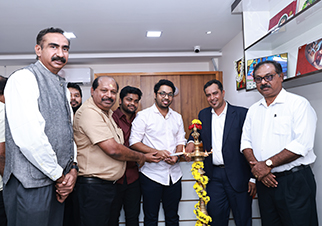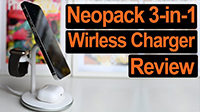
Author Archives: Administrator


Nikon India Empowers Women Photographers with Groundbreaking ‘Through Her Lens’ Campaign

Tamron Lens Utility Mobile Review

Canon R6 Mark II Review

iPhone 14 Pro Max Review – 3 Months Later

Trends in Photography in 2023
The past few
years have been really unique, primarily since 2021 was majorly spent in a
pandemic and the year 2022 witnessed majority of those restrictions lifted
across major parts in the world. But both these years presented with a unique
set of trends that were nearly on the opposite side of the spectrum. And in
2023, things are really back to the basics honestly.
Every year I do
my list of trends and predictions for the year to come and if the previous
articles are anything to go by, then we usually do tend to get most of them
right. So what are the trends in technology and photography that we reckon are
going to become big this year? Let’s find out.
_______________
By Bhavya Desai
Unedited Images
While users pride on their knowledge of
post processing that can truly turn an ordinary image into an extraordinary one,
using editing tools, one big trend that is likely to take 2023 by storm and
social media is ‘unedited images’.
.jpg)
There is a large contingent of users
online that believe that the social media world is increasingly fake and
superficial. Hence there is an increased push towards more credible work, that
features more unedited images. A small portion of that trend can also be seen
in advertising and commercial campaigns, where brands are also now using this
strategy in order to promote self-love and positive body image on its users.
Of course when we say unedited images, it
doesn’t mean that small tweaks aren’t done to make it more appealing. But these
are just minor corrections to adjust colour and exposure. Personally I am also
a user’s that prefers to use minimal edits, which means that you have to then
spend more time shooting the right image from the get go. So unedited or raw
images are likely to be a big trend in 2023.
Highlight Reels from Weddings
With a hiatus of nearly 2 years, the wedding
industry has seen an unprecedented flow of work, functions, ceremonies in 2023.
So much so that, even a novice photographer is booked out completely in
advance. But while there are many weddings that are taking place this year, the
method of content consumption has surely changed from before.
.jpg)
Gone are the days when family and friends want to
look at long videos, boring images – one after the other for hours together.
Today the world is more about instant consumption and Highlight Reels are the
mantra! Users are now looking for highlight reels for their marriage to share
instantly with family and friends that are easy to share, upload and view on
social media. So this year – highlight reels in wedding photography will be a
big trend.
Reels and Shorts
Undoubtedly the biggest trend that came
out of the past 2 years are reels and shorts. Following TikTok’s meteoric rise
in recent years, other social media platforms such as YouTube and Instagram have
also aggressively started pushing short-form video content to its users.
.jpg)
Instagram reels and YouTube Shorts let
users to publish catchy, entertaining material that has the potential to become
viral. The tremendous explosion of short form video material has a cause. Our attention
spans are shrinking, making it increasingly challenging for marketers to keep
our attention. Indeed, according to one Microsoft-commissioned research, we are
now less attentive than the typical goldfish. It is extremely difficult for
still photographers to stay in the market as video media covers over, but as we
can see, a large number of photographers are finally moving their step into
Reels and Shorts by using creative ideas to show their images in vertical
videos or by showing a behind the scenes on how they clicked the photograph to
stay in the market.
Vertical Videos
If you remember, this trend was featured
a few years back in one of my lists and makes a comeback to this year’s list as
well. The use of vertical videos will only seem relevant to you, depending on
how much video content you shoot and for what platform. Take for instance my
own personal example. Up until last year I would shoot most of my videos horizontally
on my phone.
.jpg)
But since last year, I find myself
shooting more and more videos vertically, even on our personal family trips and
vacations. And with the explosion of vertical video content on short-content
platforms, vertical videos are a thing of the future.
AI Image Creation
The year 2022 will go down in history as
an important milestone when it comes to Artificial Intelligence creating images
from scratch. I still remember, nearly a decade back I would always wonder,
what if I could just say something and a computer would throw up an image
depending on my imagination. And while that seemed like a distant dream at that
time, in 2022 it is more of a reality.
.jpg)
Enter DALL-E, an emerging AI image synthesizers that can now create amazing, photorealistic pictures from text to
image. There are some other popular platforms as well like Mid-journey and
Stable Diffusion also that do the same thing. But as seen on social media, AI
has now become a trend now, well it’s not a great match to photography but in
coming years it might be a great battle between photographers and AI. I can see
more and more of such images being used online with humans using their better
judgement to realize what might be AI generated and what would be real.
Authentic and Real Images
Don’t get confused by the headline that
you read earlier regarding unedited images? While this might seem similar, it
isn’t. authentic and real images refer to pics that are natural, candid and
un-staged. Covid and the lockdown has affected everyone on this planet and
definitely gave some creative and boring trends while sitting at home. Who
knows why trends emerge and what influences them, but lockdown appears to have
helped us all appreciate the real world. We’re no longer living in dreams since
the actual world has seemed like a fantasy at times. How does this perspective
affect photography? It indicates a stronger importance on realism in 2023.
.jpg)
So 2023 will surely see a lot more realistic
view at the subject, allowing the lens to capture true moments without any fear
of manipulation.
Metaverse
This trend has
emerged as a regular issue in any discussion on the future of the technology
sector. This area has great economic potential, with $800 billion predicted by
the middle of this decade and $2.5 trillion by 2030 according to some sources.
Regardless of the difficulties Meta is experiencing in developing its
ambitions, the metaverse in its original form can present significant potential
for businesses in terms of expanded social presence, remote working, payments,
healthcare, product trade, and so on.
.jpg)
Many
businesses are already taking use of this environment to improve their
products, project a distinct brand image, or communicate with their customers.
The industrial metaverse is one of the sector’s and Industry 5.0’s most fervent
ambitions. The applications are vast, ranging from recording and documenting
the nature of reality to analysing and enhancing data in virtual settings to
attaining long-term goals while minimising costs. We are still a long way from
experiencing a digital world that combines virtual and physical reality in a
shared online realm. Still, technology will fundamentally alter how we work,
shop, and enjoy ourselves, and we have already begun to glimpse some of its
powers.
Smart Cameras to continue revolutionising
photography
Slowly but surely the cameras of smart devices are
breaking new barriers. Don’t get me wrong, these won’t ever replace mirrorless
cameras. The application of a traditional camera is far more than its smaller
counterpart, but the rate at which the development of the smart cameras is
ongoing, it will for the foreseeable future revolutionise photography for the
years to come.
.jpg)
And that is only natural since smaller cameras require more innovation and ambition to pack technology into its tiny spaces. In 2022 the cameras have already broken the entry barrier of 100-megapixel in smart devices with greater zoom capability. So it is only a matter of time when we can expect to see more.
Wildlife Photography Tours
.jpg)
With the lockdown lifted,
wildlife photography enthusiasts and photographers have flocked parks like
never before. Infact forest reserves are experiencing a high volume of demand
from tours that offer wildlife as part of their portfolios during the season
time. With more and more users looking to get out and shoot wildlife, one of
the biggest trends this year in wildlife photography will be unique and
customised tours surrounding the topic.
So these were some of the
trends that will become big in 2023.

Best Places for Street Photography in Mumbai

Best 3-in-1 Wireless Charger For iPhone, Airpods & Apple Watch | Neopack Review

Canon R10 vs Nikon Z30 vs Sony ZV-E10: Which to Buy?

